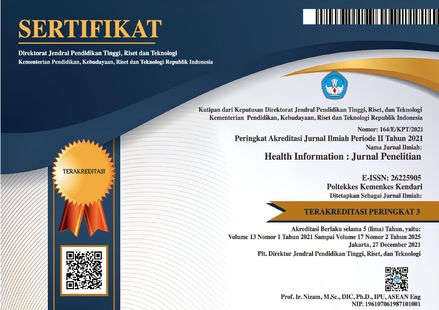Perbandingan Efektivitas Terapi Ablasi Jantung Dan Terapi Medikamentosa Pada Pasien Atrial Fibrilasi : Sebuah Review
Keywords:
Catheter Ablation, Atrial Fibrillation, DrugAbstract
Atrial fibrillation (AF) is a common cardiac arrhythmic condition that affects 1%-2% of the population. For decades, antiarrhythmic drug therapy (rhythm control) has been the mainstay of treatment for AF. However, the level of effectiveness as well as the risk of side effects is a consideration for experts looking for other alternative therapies in maintaining sinus rhythm in AF patients. In 1998, a study found that cardiac ablation therapy was more effective than antiarrhythmic drug therapy in reducing recurrent episodes of paroxysmal AF. Since that time, the use of cardiac ablation has been expanded for further research. Objective: To compare the effectiveness of catheter ablation and drug therapy in patients with atrial fibrillation. Methods: Literature review of four database; PubMed, DOAJ, Cochrane, and Google Scholar published within the last 5 years from 2019-2023. Results: There were 15 studies reporting the effectiveness of cardiac ablation therapy compared to medical therapy based on age, gender, primary outcome, secondary outcome, and to prevent the development of persistent AF. The primary outcome measured included the mortality rate and the level of morbidity, prevention from other diseases such as stroke, bleeding, or cardiac arrest. The secondary outcomes measured included recurrence, quality of life, costs and length of hospitalization. Conclusion: Based on patient characteristics, cardiac ablation therapy provided a significant benefit to patients with age < 65 years old. Female patients have higher quality of life than male patients. Based on primary and secondary outcomes, ablation therapy is superior in improving secondary outcomes such as improving quality of life, increasing LVEF, maintaining sinus rhythm, being more cost-effective, and lowering the risk of recurrence. There was no significant difference in primary outcome improvement between cardiac ablation therapy and medical therapy. Cardiac ablation therapy is also more effective than rate control or rhythm control drugs in preventing the progression of paroxysmal AF to persistent AF.
Downloads
Published
How to Cite
Issue
Section
Citation Check
License
Copyright (c) 2023 Adinda Zhafira Dyanti Putri, Adella Syafira Habsari, Jerica Anggraini, Devisa Putra Sanggrah Tiyanmara, A. Rialdi Prananda (Author)

This work is licensed under a Creative Commons Attribution-ShareAlike 4.0 International License.
Authors retain copyright and grant the journal right of first publication with the work simultaneously licensed under a Creative Commons Attribution-ShareAlike 4.0 International License that allows others to share the work with an acknowledgment of the works authorship and initial publication in this journal and able to enter into separate, additional contractual arrangements for the non-exclusive distribution of the journals published version of the work (e.g., post it to an institutional repository or publish it in a book).











